Root Awakening: Pre-treat cut flowers for longevity
Sign up now: Get ST's newsletters delivered to your inbox
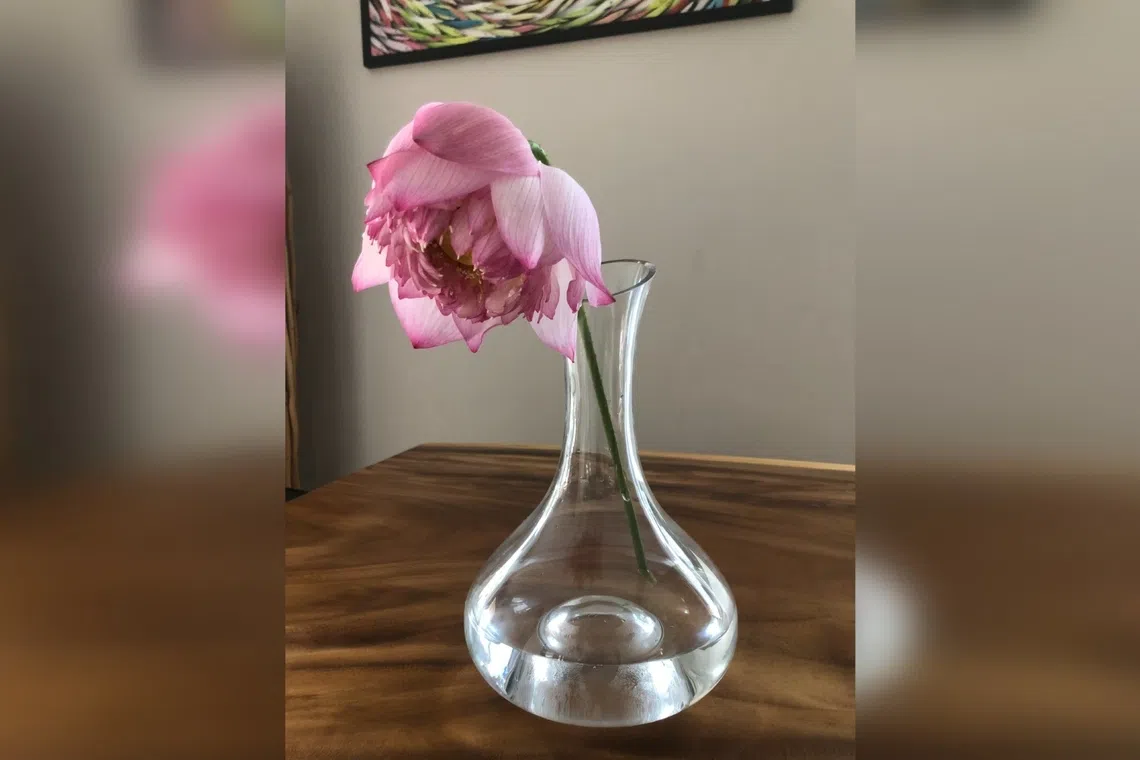
Ensure there is proper ventilation and avoid exposing the bloom to ripening fruit.
PHOTO: JOHN LEE
Wilson Wong
Follow topic:
Not all lotus blooms make good cut flowers
My cut lotus flower was placed in a vase of water, but it wilted in three hours. How do I prevent the plant from wilting quickly and prolong the blooming of the flower?
John Lee
Not all lotus blooms make good cut flowers. Some varieties have more longevity, making them more durable as cut flowers.
Due to the stem’s hollow nature, cut lotus blooms do not take up water efficiently enough to keep the flower alive. You will need to pre-treat the flower to ensure that it lasts.
You should pick a freshly opened flower and then submerge its stem in the water. While the stem is underwater, make a cut. Cutting the stem underwater prevents air bubbles, which block water intake, from entering. Once this is done, move the lotus into a vase filled with cool, clean water.
Ensure there is proper ventilation and avoid exposing the bloom to ripening fruit. These can emit ethylene, which can cause the premature decline of flowers.
Syngonium needs light and air circulation
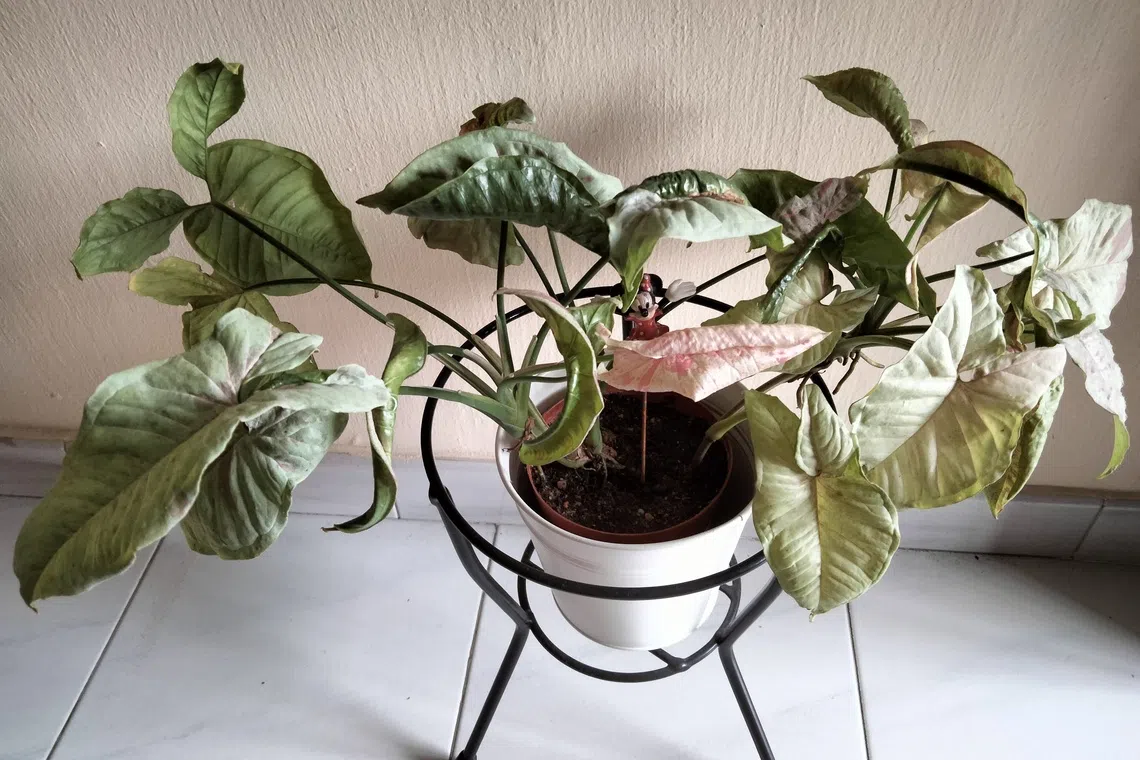
Good light is necessary for leaf colour to develop.
PHOTO: ALBERT LIM
Why are some of my syngonium’s leaves curled, and how do I make them turn pink?
Albert Lim
Check for pests, such as mealy bugs, that might be hiding within the folds of the leaves. Their presence can hinder the proper development of the leaves.
Such pests can be difficult to eradicate using contact pesticides. Adding dinotefuran pellets (a type of systemic pesticide) to the soil may offer some form of control.
Ensure the plant has at least four hours of filtered sunlight a day and sufficient air circulation. Good light is necessary for leaf colour to develop. Air movement is also essential for new leaf development so they can unfurl normally.
Old, low-yield plants need to be replaced
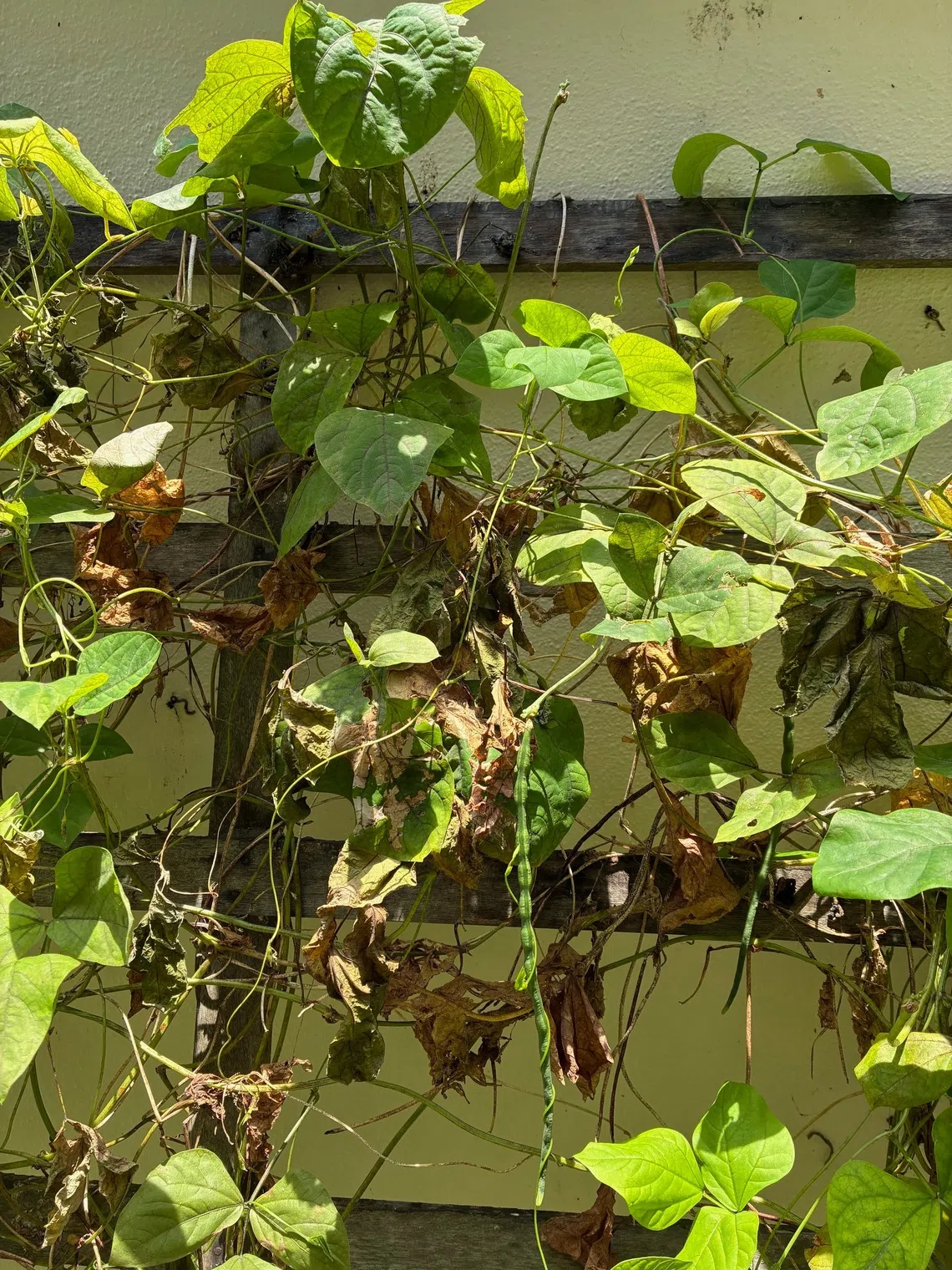
If your plants are old, it may be more practical to restart by sowing the seeds of new ones.
PHOTO: JONATHAN LAW
My long bean plants were grown from seeds. Their leaves began to turn dry and brown about a month ago. Should I remove the plants and restart from seeds?
Jonathan Law
Check for caterpillar damage. Some leaves seem to be folded and may conceal pests within. The caterpillars will eat the leaves, eventually killing the foliage. Remove damaged leaves and spray the plant with Dipel, a bacteria-based organic pesticide that targets caterpillars.
If your plants are old, it may be more practical to restart by sowing the seeds of new plants. Long bean plants’ vigour and productivity will decline over time.
Pollination, environmental conditions can affect fruit production
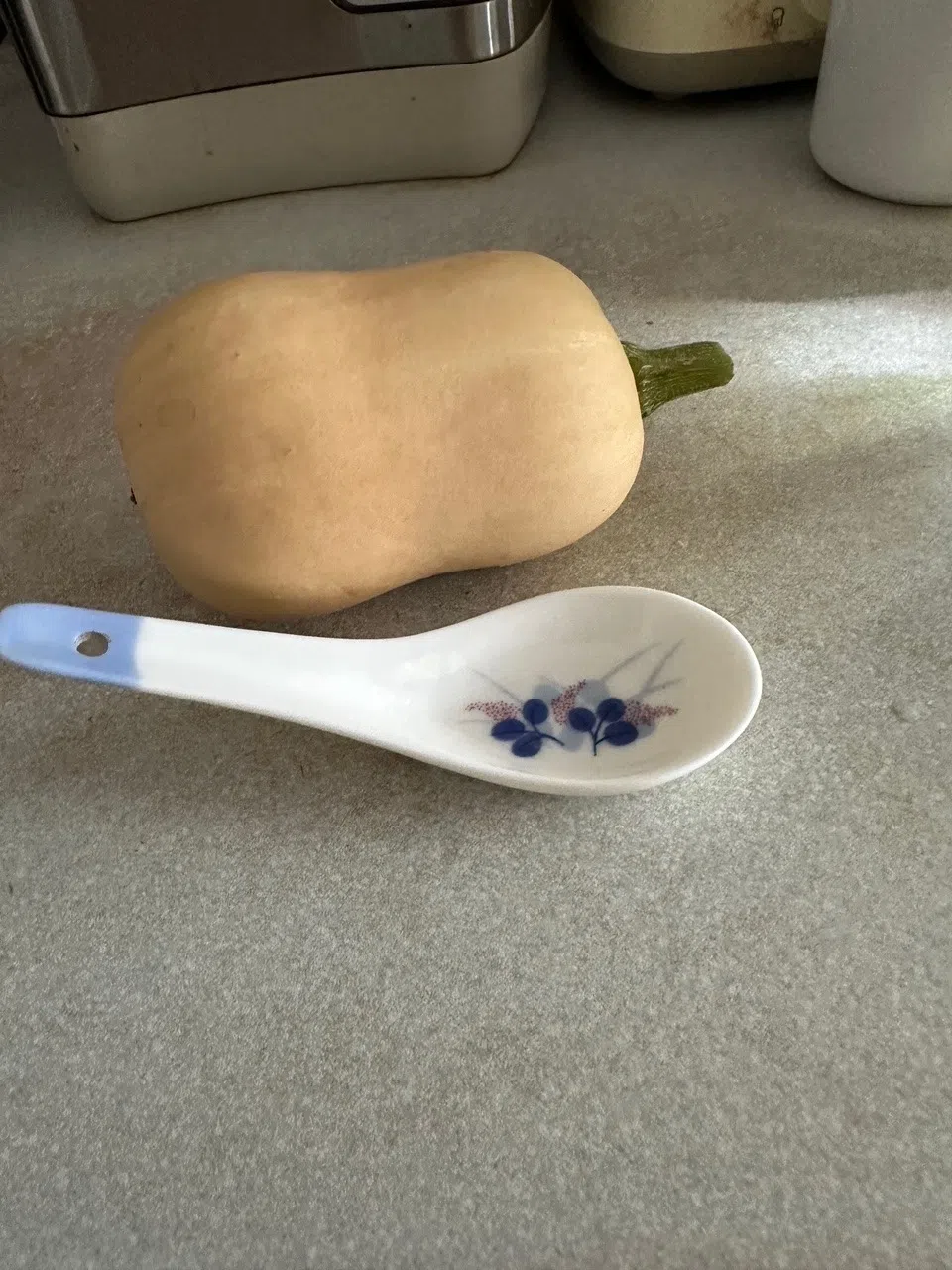
Successful pollination requires proper timing.
PHOTO: THOMAS LEE
Why are my pumpkins and limes getting smaller?
For all fruiting plants, successful pollination is necessary for good fruit production. Complete pollination by natural pollinators is needed for the production of large fruit.
Hand pollination – especially when carried out on pumpkins – may be incomplete and result in smaller fruit, particularly if the plant is older.
Environmental conditions can also affect fruit production. Rain can lead to wet soil, which can affect root health and hinder the absorption of certain nutrients necessary for fruit formation. Lack of sunlight during the rainy season can also reduce the photosynthetic rate.
Try to time fruit production so it takes place during the right season, in sunny conditions.
Pandan infested with sap-sucking pests
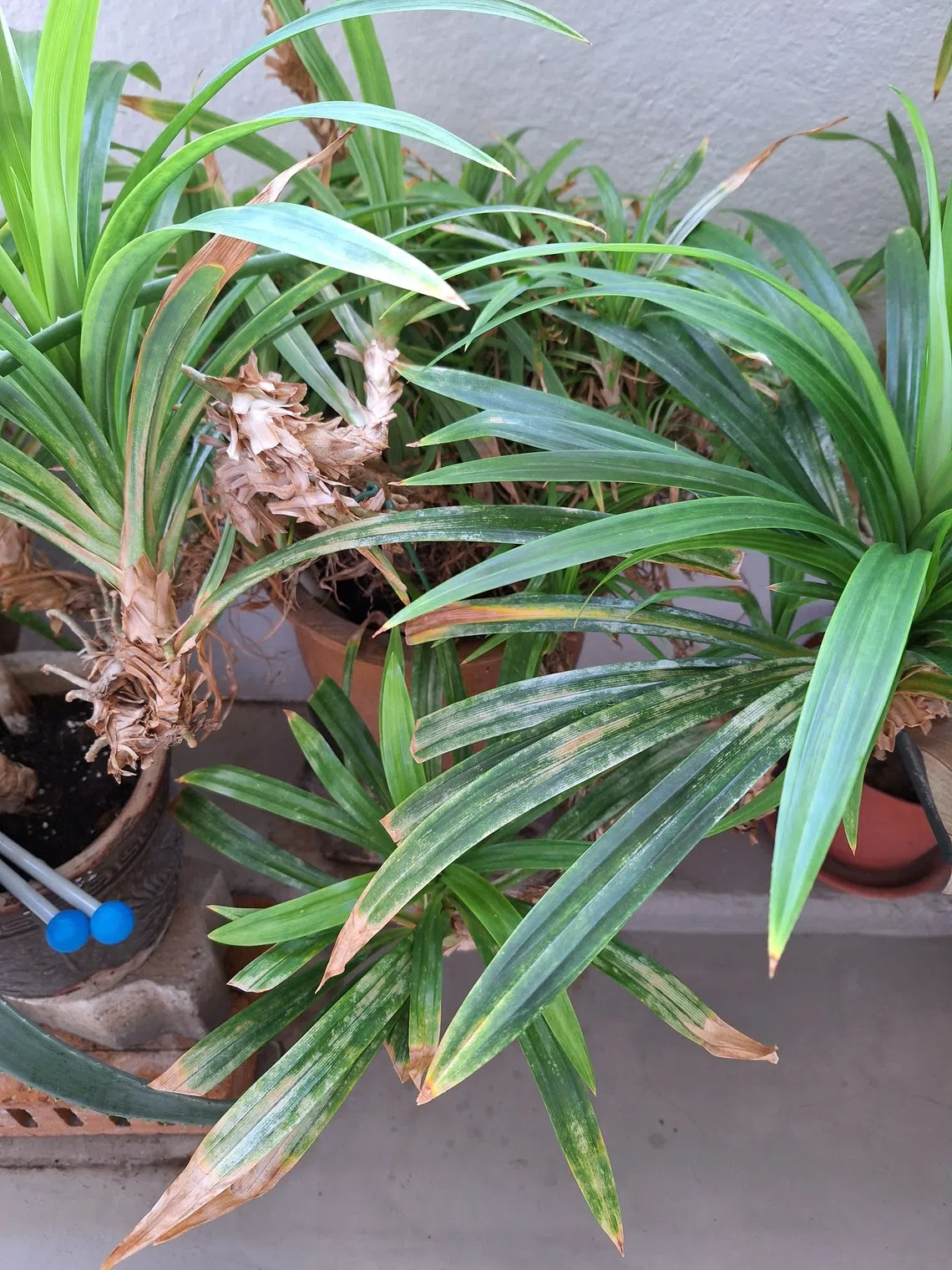
Wash the plants regularly to get rid of any pests lurking on the leaves.
PHOTO: SINDY ANG
My pandan plants’ leaves were healthy and green, but have turned pale and brown in recent weeks. I water the plants daily. What is wrong?
Sindy Ang
Your plants seem to have been infested by spider mites, a type of sap-sucking pest. Spray thoroughly with summer oil to suffocate them. Repeated applications are needed to provide adequate control.
Ensure your plants get at least four hours of direct sunlight. The soil should be kept moist and not be allowed to dry out. Wash the plants regularly to get rid of any pests lurking on the leaves.
Answers by Dr Wilson Wong, an NParks-certified practising horticulturist and parks manager. He is the founder of Green Culture Singapore and an adjunct assistant professor (Food Science & Technology) at the National University of Singapore.
Have a gardening query? E-mail it with clear, high-resolution pictures of at least 1MB, if any, and your full name to . We reserve the right to edit and reject questions.

